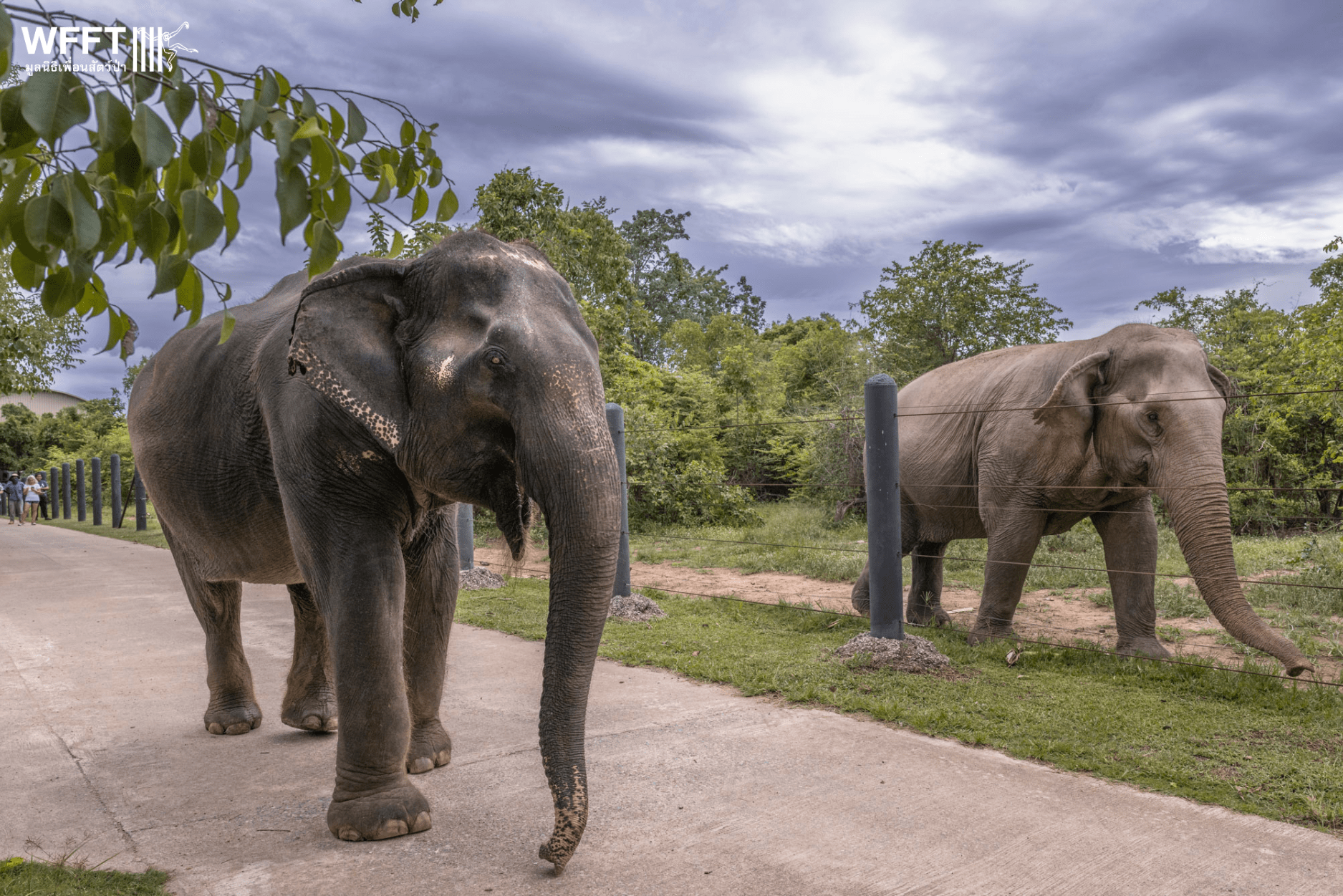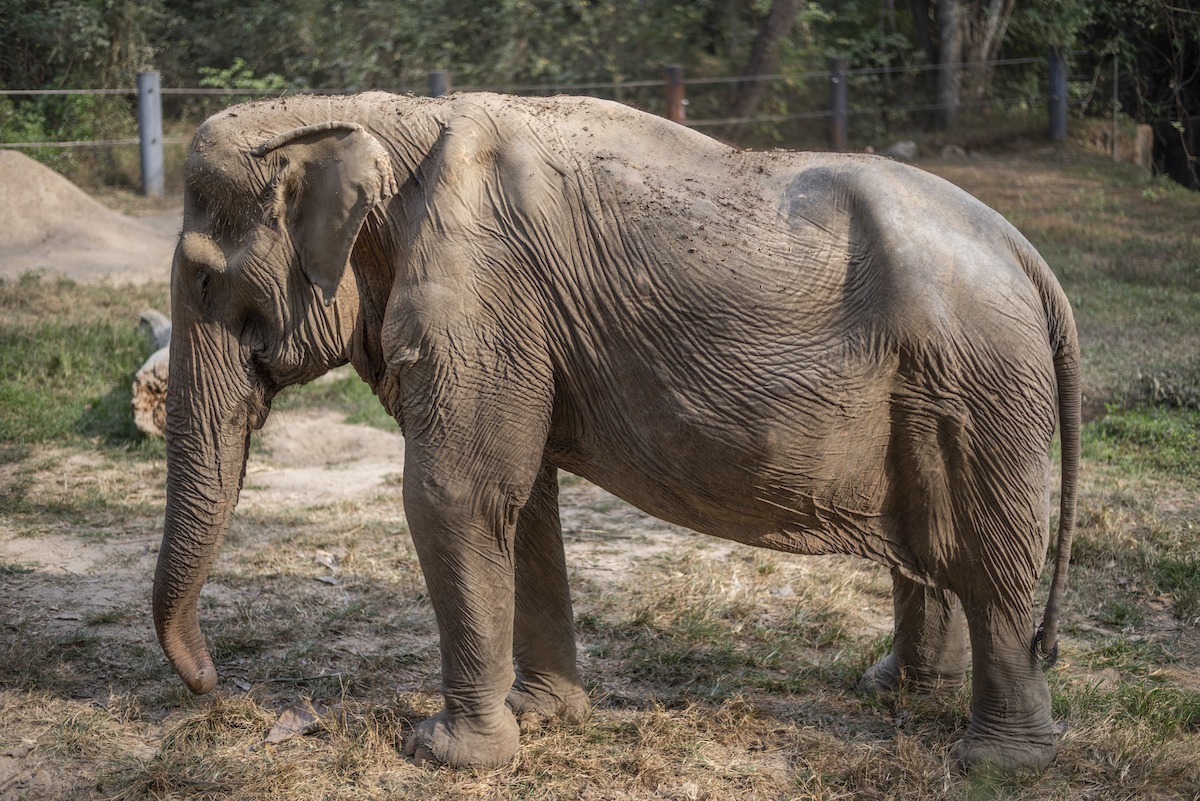Hope for Alicia regaining some sight following a specialist visit.
The unlikely tale of the two dead elephants
Bangkok Post
January 19, 2012
Things keep getting fishier and fishier at the Kaeng Krachan National Park, following the slaughter of two wild elephants, one burned to cinders and the other left rotting in a field, minus their tusks and sexual organs.
Scandalous?
Let’s look at the news chronologically.
Shortly after New Year, two elephants were found dead with bullet wounds along their normal walking routes linking the forests in Phetchaburi and Prachuab Khiri Khan where some 200 wild elephants still roam. Had it not been for reports by the Padeng villagers who spotted the carcasses, things would have remained out of the public eye.
After the news broke out, National Park director-general Damrong Pidet said the slaughter and burning was most probably done by Vietnamese hunters working in the illicit ivory and exotic food trade.
Kaeng Krachan National Park chief Chaiwat Limlikit-auksorn, meanwhile, quickly blamed it on ethnic Karen forest dwellers in Kaeng Krachan. The park chief’s hostility against Karen forest dwellers is no secret. Last year, he led a team to torch their homes, accusing them of being Burmese slash-and-burn highlander who grow opium and hunt wildlife. The violent eviction and forced resettlement has plunged the forest dwellers into near starvation. Human rights groups are now suing the park chief on the forest dwellers’ behalf.
That is not all. Mr Chaiwat is also facing a murder charge over the killing of Tatkamol Ob-om, an advocate for Karen forest dwellers, after he had threatened to go public with alleged wrongdoings in the Kaeng Krachan National Park.
Despite the serious charges, Mr Damrong refused to remove the controversial Kaeng Krachan park chief to facilitate a police investigation.
When the latest scandal struck, Mr Chaiwat insisted the elephant was burned by a forest fire although police found some 20 tyres that had been as fuel to torch the elephant at the site. His boss, Mr Damrong,
vehemently denied involvement of park officials.
It looked as if the case would be closed when a local Padeng villager was arrested for possession of wildlife remnants. But then stories from eyewitnesses started to emerge.
Local villager Puan Tuamsap, 58, told the police he saw the elephants’ bloated bodies near a swamp while herding his goats on Dec 31, 2011, untouched and complete with their tusks and body organs. When he went
with park officials to the site the following day, he said they told him remove the tusks, but he refused.
When the police started investigating park officials, Mr Chaiwat criticised the move, saying he had eyewitness evidence that a group of poachers went to the elephant killing site to collect the tusks and
sexual organs on Dec 26. The park workers told the police the hunters shot the elephant from a tall tree near the killing site. While examining the area, the police found no such trees.
The police finally issued arrest warrants for five park officials, including Suriyon Pothibandit, Mr Chaiwat’s assistant for destroying the evidence of killed elephants. Mr Chaiwat was also ordered
temporarily transferred to facilitate a police investigation. Some park workers reportedly confessed to taking part in burning the elephant and extracting the tusks. They gave the tusks to Mr Suriyon, they said.
Mr Damrong quickly said elephant burning is only a minor offence and the police should focus on who killed the elephants. Then he took a group of reporters to the site of the killing where he showed them Mr
Suriyon’s letter seeking legal permission to burn the elephants’ carcasses.
Asked why it took so long for Mr Suriyon’s letter to show up, Mr Damrong said it was because Mr Suriyon was busy carrying out his duties elsewhere on his orders.
After finally turning himself in, Mr Suriyon insisted he did not have the tusks because he had already had them burned.
Mr Chaiwat backed him, forgetting his own previous account that the elephants’ tusks and sexual organs had been collected by poachers before the carcasses were found.
Fishy? If not, then what is?
After a series of park officials’ flip-flops and cover-ups, I am worried about having our forests and wildlife in these people’s hands.
Aren’t you?




